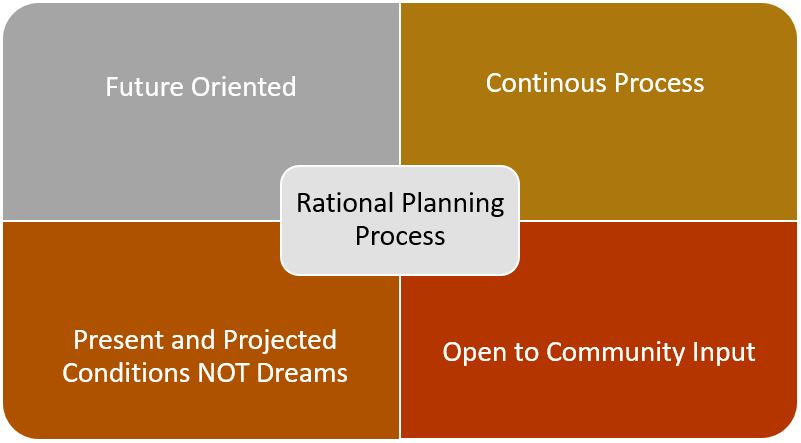A successful land use plan rarely creates a high-wage job or spurs capital investment like a private company. However, a well-crafted land use plan built with public support is critical to the location of business in specific locations due to the role land use planning plays in the zoning process. Good land use plans make zoning decisions easier. They also provide input to private developers and business leaders as to where the community wants their developments to happen.
Local government manages design, growth, and development typically through a comprehensive plan that can serve as a legally binding document that sets the overall goals, objectives, and policies to guide the local legislative body’s decision making regarding the development of a region or community. A comprehensive plan serves not only a resource for public policy makers but also as a guide for private sector developers looking to make strategic investments at specific locations for specific purposes. Also, comprehensive plans are optional or mandatory, use text and maps, and identify problems and issues. Comprehensive plans involve research to flesh out the details of problems and issues, formulate broad goals of the city for the land in question, and identify implementation methods to achieve those goals for the geography in question. Finally, comprehensive plans create a system of evaluation of the goals and methods to determine success and provide for the ability to amend the plan.[i]
[i] See generally the City of Indianapolis-Marion County Comprehensive Plan, retrieved from http://www.indy.gov/eGov/City/DMD/Planning/Services/Land/Pages/comp_plan.aspx.

The “rational process” for developing a comprehensive plan operates on five general principles. The planning should be future-oriented by focusing on the use of future land and the local government decisions regarding zoning and capital infrastructure investments.[i] The planning process is continuous in that it is a living and breathing document that serves as a guide but evolves over time so as to not become obsolete under changing public and private sector conditions.[ii] The planning is based upon a determination of the present and projected conditions with the area being planned and does not constitute a list of “dreamed of” major civic projects.[iii] Finally, the planning must be fair and involve an open process for community and private sector participation and must be comprehensive and not just cover individual issues such as sanitary conditions but take a broader view of the future of the city.[iv]
Municipal or county planning commissions help guide growth and development and set the framework for zoning regulation. These local government organizations could be elected or appointed officials and their focus is the development of studies, maps and plans that recommend planned uses for land based upon the physical, environmental, social, economic, and governmental characteristics, functions, services, and other aspects” of their geographic area.[v] Planning commissions are also responsible for initial review of new zoning ordinances or amendments to existing zoning ordinances.[vi]
[i] See generally http://rational-planning-model.co.tv/#Verify_Define_and_Detail_the_problem.
[ii] Ibid.
[iii] Ibid.
[iv] Ibid.
[v] See Ohio Attorney General Economic Development Manual, 2017.
[vi] Ibid.